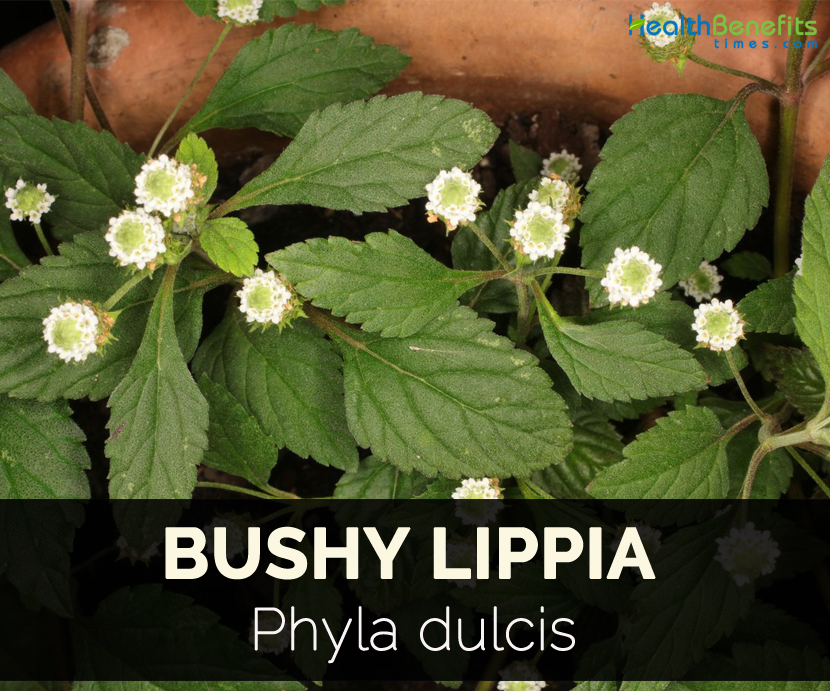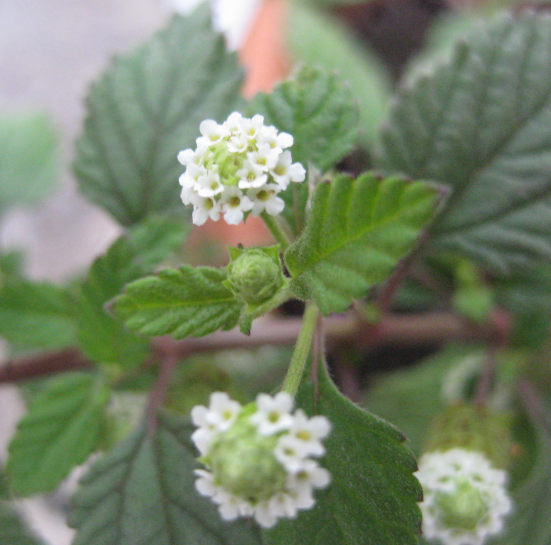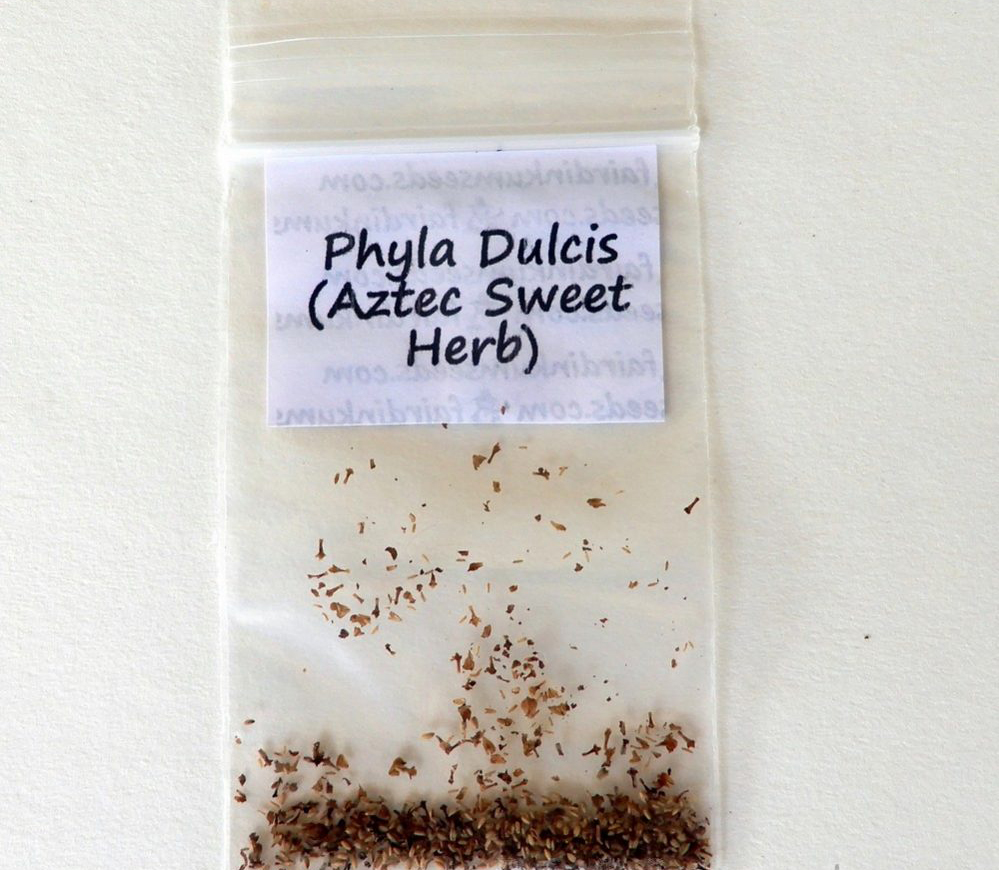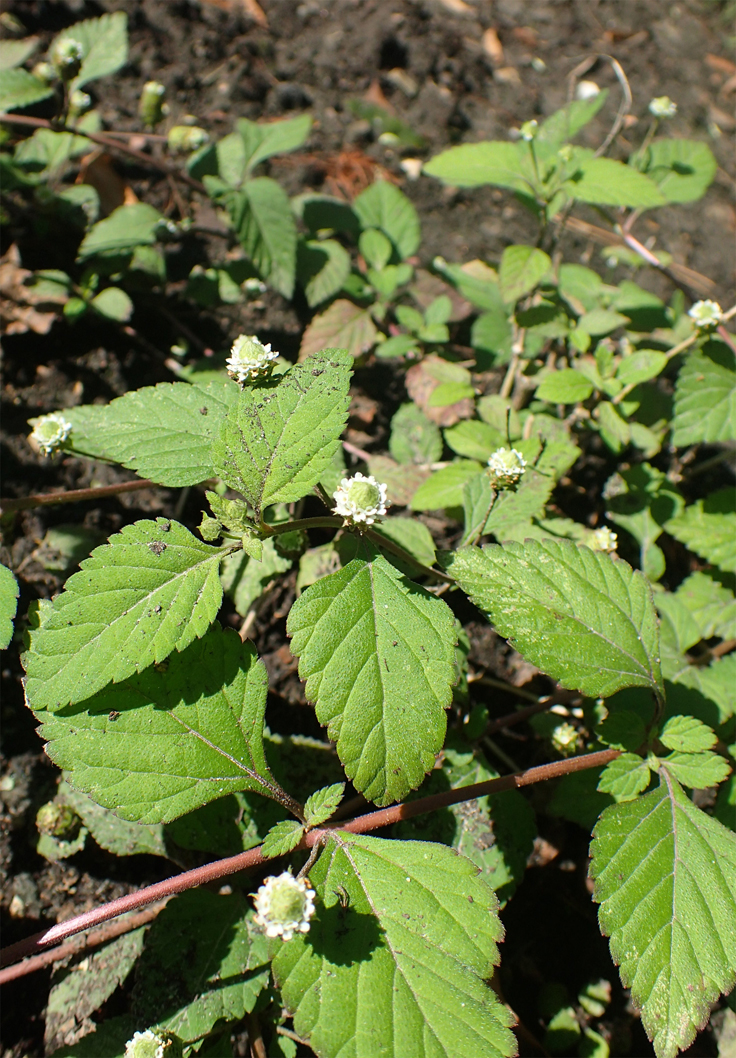| Bushy Lippia Quick Facts |
| Name: |
Bushy Lippia |
| Scientific Name: |
Phyla dulcis |
| Origin |
Found growing in North America and also in warm regions of Asia and Africa. Cultivated in gardens of England. |
Bushy Lippia is a Central American plant which is used by Aztac peoples as an herbal sweetener. This perennial herb is inherent to Southern Mexico, the Caribbean, Colombia and Venezuela. It is well known of more than 200 species of Lippia which are mostly from the tropics. It is a fast growing ground cover which sends horizontal runners. It grows well in areas with full sunlight and requires warm climate with soil pH ranging 6 to 8. Leaves are decussate-opposite, lanceshaped-oblong about 3-10 x 1.5-3.5 cm across with narrow to pointed base, sawtoothed margins, sparsely velvet-hairy above. Leaf stalk is velvet-hairy, slender about 1 cm long and exstipulate. Leaves are extremely sweet and known to be 1500 times sweeter than ordinary sugar. Flowers form in leaf axils in a solitary spike or cylindric head. Flower cluster stalk is hairy, round about 0.5-2.5 cm long. Flowers are aromatic, stalkless, calyx is cup shaped. Flowers are bluish purple, hypocrateriform, four lobed. Upper 2 lobes are notched, lower 2 lobes are deflexed. Flower tube is narrow, cylindric, tip ampliate 5 x 1 mm. Fruit is a drupe, pear shaped about 2 x 1.5 mm hard, bony separating into 2 seeded pyrenes.
Uses
-
- This is a stimulating and relaxing agent. The taste is very pleasant but be careful not to use it too freely as it may provoke nausea.
- The demulcent and expectorant effect to the throat and air passage is soothing to coughs, colds, whooping cough and the freeing of stuffiness in the bronchial tubes and affection thereof, in general.
- Acting upon the mucous membrane as an alterative. More serviceable combined with syrup of wild cherry or other lung tonics.
- In folk medicine, it is used for treating bronchitis, cough, liver disorders, indigestion, dysentery and hypertension.
- Dried plant is used for hypertension, stomach troubles, inflammation, diabetes, hemorrhoids, bronchitis and hepatosis.
Facts About Bushy Lippia
| Name |
Bushy Lippia |
| Scientific Name |
Phyla dulcis |
| Native |
Found growing in North America and also in warm regions of Asia and Africa. Cultivated in gardens of England. |
| Common/English Name |
Mexican Lippia, Yerba Duce |
| Name in Other Languages |
English: Aztec sweetherb, Mexican lippie, Honeyherb, Mexican lippia, Rough fogfruit, Mexican sweetleaf, Sweetleaf, Sweet lippia;
German: Aztekisches Süßkraut;
Spanish: Hierba dulce, Oruzuz, Yerba dulce;
Afrikaans: Beukessbossie;
German: Aztekisches Süßkraut , Minzverbene;
Spanish:-
México: Correchoncho, Hierba dulce,
Perú: Menta dulce,
Guatemala: Oro azul, Orozul,Orosul,
Cuba, Guatemala: Orozus, Orozús, Orozuz del pais , Orozuz, Orozuz de la tierra, Oruzuz;
Panamá: Regaliz, Salvia santa |
| Plant Growth Habit |
Straggling shrub |
| Plant Size |
4-6 ft tall |
| Leaf |
Lanceshaped-oblong, 3-10 x 1.5-3.5 cm across |
| Medicinal part |
Leaves |
Dose
Tincture, 10 drops in water; 1 dram of the tincture will be found sufficient to add to 4 oz. of cough syrup.
Homoeopathic Clinical
Tincture of whole fresh plant—Cough.
References:
https://www.itis.gov/servlet/SingleRpt/SingleRpt?search_topic=TSN&search_value=832847#null
https://en.wikipedia.org/wiki/Phyla_dulcis
http://www.cpa.msu.edu/beal/plantofweek/plants/lippia_dulcis_20081013.pdf
https://plants.usda.gov/core/profile?symbol=LIAL
https://www.flowersofindia.net/catalog/slides/Bushy%20Lippia.html
https://ayurwiki.org/Ayurwiki/Lippia_alba_-_Bushy_matgrass
Comments
comments





